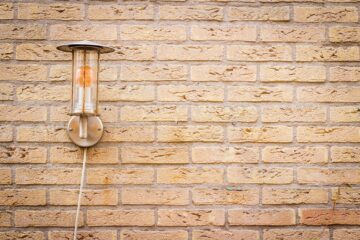Painting your house’s interior has an effective market value, which can help sell your house at a good price. So, get a good plan before painting the interior of the house. The outcome will be profitable at last. Here we will give you step by step tips for an effective house interior painting.
1. Set Up A Vision
First, think, and write down your plans. Think about colour, room light, sunlight, gloss, trim, doors, windows.
• Color: If you plan to paint dark colours on your wall, then think of the size of your room. Dark colours won’t be suitable for smaller rooms. You will need enough natural light and more windows in Your room if you go with dark colours. But there is no issue with light colours. It is suitable for anywhere.
• For selling: If you plan to sell the house, then colour it with neutral colours that suit any decoration or furniture. In this case, white colour is more suitable as a neutral colour.
• Checking: Different people have different choices, so you can verify your chosen colour by taking photographs and uploading them to media. It will help to get verified your room’s best adjustment. And, you will have an adjacent idea of how your room should look.
• Aesthetic: Be artistic while painting for yourself. Try more than once and make the best view of your interior. It’s your place, be bold with your colour choice.
• Complementary colours: It is helpful when two adjacent rooms are coloured. You can use two shades of any colour. If you use a bold, then contrast it with others.
• Glossy level: Carefully choose the glossy level of your paints. Glossier and shiny colours are easier to clean. But the flat paints are difficult to clean. Usually, glossier paints are used in the kitchen or baths. And the flat paints are used on large walls, especially on the ceiling.
2. Measurement
Estimate the area perfectly that you need to paint on. Take accurate measurements of the walls’ height and width to have the right measurement of square feet. To get the area measurement, simply multiply the height by the width. Don’t forget to subtract the windows and doors. Keep a detailed list of the measurement.
It is better to arrange more paint than require because your error might end up running short. Select the coverage area for every colour and estimate the number of gallons. If you cannot do this, measure the wall’s highest height, and multiply its width. Make your best guess for the angled ceiling and walls.
Now, the lowest height and the highest heights wall deference should be multiplied by its width. Half the answer and subtract it from the original height by width area. Finally, you will get the wall area.
3. Budget
Expenses vary on a large scale depending on quality. An upper-grade paint expected to cost over 300 dollars per 2000 square feet. Other materials like brushes, tapes, rollers, pans will cost rather a hundred dollars. But the materials are not equal for all types of painting. Some of them are for more coating. Costs will be double if you must double coat on everything. It means cheaper paint will cost more in a long period. Usually, you can go for a cheaper primer, but you should select a coating for an expensive one.
4. Measure Amounts
For the ceilings first, you must take the floor squire foot measurement. After that, multiply the floor plan by two. This measurement is a double coating. Add another 10% and divide them by 400. Start with a gallon for 600 square feet floor. Trim is very difficult to measure exactly. It is wise to start with less than you need.
For the walls, measure the wall space in Linear feet. You can use a tape measure for the areas. After that, multiply the ceiling height if it is too story area. Multiply them with double-wall height and multiply them by two for double coating.
Finally, after completing the multiplication subtract 40 square feet per window and 60 square feet per door. To get how many gallons you will need, divide the final number by 400. Apply this process for every room with a particular colour.
5. Schedule
Measure an accurate timing for the project. There is preparation for the wall like cut in eating and breaks, moving the furniture, and cleaning up. Then as per plan rearranging them all. It will take more time if you make any errors, so take it on the count. Simply it is a multi-day task. Pushing too much for a day won’t be fruitful.
6. Plan for Workforce
Without a professional crew, you will have to do many jobs. Furniture moving, wall preparation, materials preparation, floor covering, and cleaning are not easy to do. Get as many people as to help as possible. Recruit the cutter to cut in the trimers to trim the windows and doors—recruit rollers as they can paint a large area very quickly. Recruit main for caulking and finally coordinating everything.
7. Rearrange Furniture
Empty the room or moving everything to the middle will not be enough. Rather, rent storage and keep them all there.
8. Prepare the House
The task required to do before paint is to wash the walls, patch, sealing stains, remove wallpapers, drying, and sanding. Also, taping and trimming, lay drop cloths are to be done.
9. Primer
Dark stains colours and previously unpainted walls need to be primer coated in white. After applying primer, give 24 hours for drying. Then apply the topcoat. Keep open the windows for ventilation. It will help to dry faster but secure things from the dust.
10. Painting and Cleaning
Now, paint your interior with the equipment and colours. Start with the largest room to smallest and top from bottom. After painting, ensure cleaning all the materials and disposed of them properly.
If you enjoyed this article, please feel free to share it and spread the word with who may find it useful. If you are looking for a professional painter and decorator in London get in touch today for a FREE quote.


